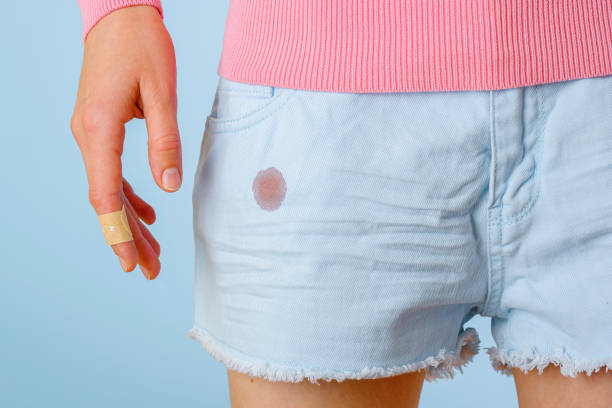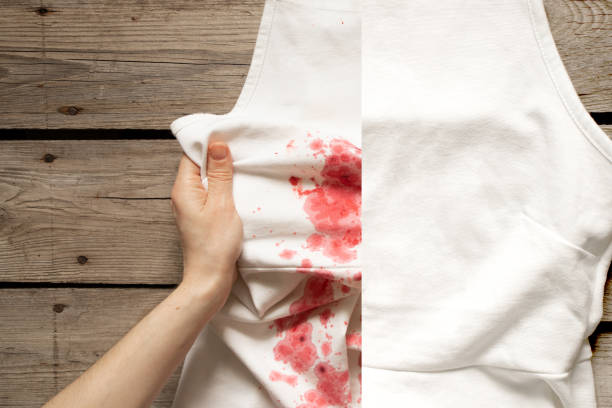Accidentally mixing colored clothes with whites can result in color bleeding, leaving you with garments that look far from their original state. Fortunately, there are effective methods to rescue your clothes from color bleed disasters. This article will guide you through the best practices to get color bleed out of clothes, ensuring your wardrobe remains vibrant and unblemished.
Immediate Action After Color Bleeding
If you notice that your clothes have bled in the wash, the key is to act quickly. The longer the dye sits on the fabric, the harder it becomes to remove. Begin by separating the affected garments from the rest of the laundry to prevent further transfer of color.
Fill a sink or basin with cold water and add a cup of white vinegar or a tablespoon of detergent designed for color-safe washing. Submerge the stained garments and let them soak for 30 minutes to an hour. The vinegar or detergent helps to loosen the dye from the fabric, making it easier to wash out.
Using Color Run Removers
For stubborn stains, a commercial color run remover can be very effective. These products are specifically designed to tackle color bleeding. Follow these steps for the best results:
- Read the label instructions on the color run remover.
- Fill a basin with cold water and add the appropriate amount of color run remover.
- Immerse the stained clothes and let them soak according to the recommended time.
- Rinse the garments thoroughly with cold water.
- Check the stains before letting the clothes dry, as drying can set the stains permanently.
Home Remedies to Remove Color Bleed
If you prefer using household items, there are several effective home remedies for tackling color bleed. One popular method includes using baking soda and hydrogen peroxide. Here’s how you can do it:
Mix a paste of baking soda and hydrogen peroxide and apply it directly to the stained areas. Let it sit for about 15-20 minutes. Then, rinse the garment with cold water and wash as usual. Another home remedy involves using lemon juice mixed with water, which can act as a natural bleaching agent to remove unwanted dye.
Preventing Future Color Bleeds
Preventing color bleeding is always better than trying to fix it. Here are some tips to avoid color runs in the first place:
- Sort your laundry by color before washing.
- Use cold water for washing colored clothes.
- Add a color catcher sheet to your laundry.
- Wash new clothes separately the first few times.
- Always read the care labels on your garments.

When to Seek Professional Help
While home remedies and commercial products work well for many, there are times when professional intervention is necessary. If you’ve tried multiple methods and the stains persist, it’s time to consult a professional cleaner. Professionals have access to specialized equipment and treatment solutions that can handle even the most stubborn dye stains.
Sometimes, attempting too many DIY fixes can make stains worse or set them further, so knowing when to seek expert advice is crucial for preserving your garments.
Conclusion
Removing color bleed from clothes can be daunting, but immediate action and the right techniques can restore your garments. Start with simple methods like soaking in cold water with vinegar, or use commercial products designed for color bleed. For those who prefer natural solutions, home remedies like baking soda and hydrogen peroxide can be equally effective.
Ensure you take preventive measures to avoid future color bleeding mishaps. And remember, if the stains prove too stubborn, professional help is just a visit away. With these tips, you can keep your clothes looking vibrant and new.
FAQ
1. Can I use bleach to remove color bleed stains?
Bleach can sometimes be used to remove color bleed, but it’s risky as it can damage the fabric or alter the color of the garment. Always test on a small, inconspicuous area first or use bleach for whites only.
2. How do I prevent color bleeding in the first wash?
Wash new clothes separately the first few times. You can also use color catcher sheets to trap loose dyes during the wash, reducing the risk of color transfer to other clothes.
3. What are color catcher sheets and how do they work?
Color catcher sheets are special sheets designed to catch loose dyes that bleed during the washing process. Placing one in your laundry load helps prevent these dyes from transferring onto other garments.
4. Is it safe to use hydrogen peroxide on colored clothes?
Hydrogen peroxide is generally safe for colored clothes when used in moderate amounts. However, it’s advisable to test it on a small area first to ensure it doesn’t cause any discoloration or damage to the fabric.
5. Can I use salt to set the colors in my clothes?
Yes, soaking new clothes in a saltwater solution before the first wash can help set the colors and reduce the risk of bleeding. Use about a half cup of salt in a bucket of cold water for soaking.
